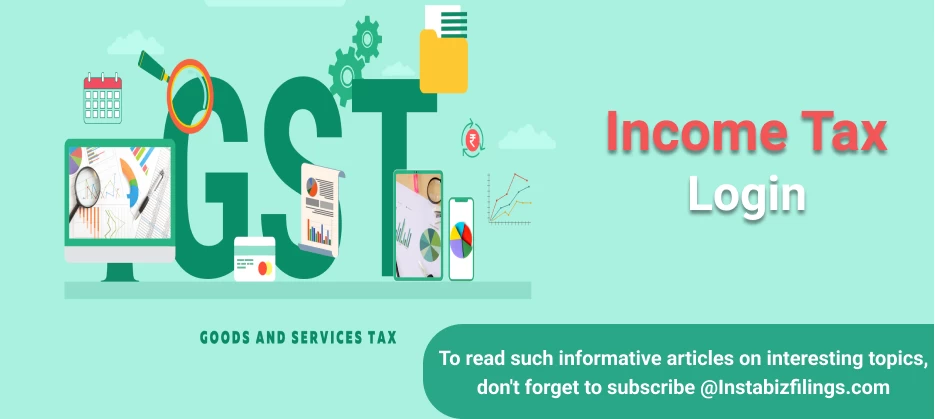
Goods and Services Tax
January 16, 2025 by Team Instabizfilings
The Goods and Services Tax (GST) has replaced many indirect taxes in India by subsuming them all under a single tax system. It makes it easier for business entities and also put utmost transparency to the tax system. This article will give details on what GST is, the advantages of GST, how to log in GST Goods and Service Tax portal, and other GSTD news.
What is the Goods and Services Tax (GST)?
GST is of a single type, all-inclusive tax which is charged on supply of goods and services in India. Brought in force since July 1, 2017, GST has subsumed a wide array of indirect taxes like Value Added Tax (VAT), Central Excise Duty, and the Service Tax. It applies to all trading organizations that make a stated turnover level as their revenue generating and selling capacity.
Under GST, the tax is divided into three types:
-
Integrated Tax (IT) is collected by the central government.
-
State Goods and Services Tax (SGST) – As the name suggests it will be collected by the respective state government for its territory.
-
Integrated Goods and Services Tax (IGST) – This tax is levied when goods and services are supplied across the states.
Goods and Services Tax Network (GSTN)
Therefore, the Goods and Services Tax Network (GSTN) is at the centre of the GST structure in India. It is a private organization, which is an organization of non-governmental and non-profit making character whose main responsibility is to offer IT support structures to government, especially the central and state governments, those who pay taxes and all stakeholders. The GSTN controls the GST portal where the returns of the GST, along with the payment and other services are filed.
How to Login to Goods and Services Tax Portal
In order to use the online services provided by it for various GST related services one has to first sign into the GST portal. Follow these simple steps:
-
Visit the GST Portal: To obtain these details the candidate must visit the official Goods and Services Tax website at www.gst.gov.in.
-
Enter Login Details: On the homepage, now enter the ‘Login’ button. You will require entering GSTIN/Username and Password in order to proceed with the work.
-
Two-Factor Authentication: Once you have provided your login details, you will be required to go through a 2FA (Two Factor Authentication), for instance OTP will be sent to your registered mobile number or email address.
-
Access Your Dashboard: After making the login you are taken to your GST portal where you can file returns, check the status of payment and many other operations.
Goods and Service Tax Office
The Goods and Service Tax Office means all those offices which have been established by the GST department in India. These offices work with the registration, assessment, as well as audits of taxpayers under the GST. They also assist in disputes arising out of filing of GST returns and GST payments. You can visit the GST office for consultation or whether you need any help regarding GST related issues.
GST News: Latest Updates and Information
Here is the GST news to help you get updated and informed on the latest news with regard to Goods and Services Tax. Updates about policy amendments and new revelations mean that every person and business entity is aware of what is expected of them by law.
You may receive updates on the official website of GST or on any news channel or website which reports on economic or taxation issues. Amendments in GST rules, exemptions and Rates which affect the Business needs to be fresh in Marketing Communications.
www.goodsandservicetax.gov.in: The Official GST Portal
They are the official Website of the Goods and Service Tax through which all the operations on the GST are done online. Businesses are able to register for GST, submit returns, pay amounts, monitor refunds and much more. Here the taxpayer would get all the information of the GST and the management of their requirements in one portal.
Goods and Service Tax Registration: How to Get Started
-
Visit the GST Portal: First and foremost, to register for the GST service, go to the GST home page.
-
Click on 'Register': In the home page, click on ‘Services’ and then click on the ‘ New Registration’ link.
-
Fill Out the Registration Form: Fill all the necessary fields, like your business information, PAN Card number and bank account information.
-
Submit and Verify: Once the formative has been filled, you need to submit the form for review. You are given an Application Reference Number (ARN) that you use to check on the status of your registration.
-
Receive GSTIN: After the registration, you will be issued with a GSTIN that you will use on your business as soon as it has been approved.
How GST Works: Simplified Process
Goods and Services Tax works on a concept of tax on value added at every stage of production and supply chain. The tax in this case is paid by the final consumer but those on the supply side are in most circumstances compelled to pay the tax on behalf of the final consumer. The major steps involved in the GST process include:
-
GST Registration: However, all those having turnover of Rs.9 lakhs or more have to compulsorily register for GST.
-
GST Filing: An organization is required to submit daily, monthly or annually GST returns which includes information about sales, purchases and tax credit.
-
GST Payment: Once returns have been filed, the businesses have to pay their taxes of the amount to the government.
-
Claim Input Tax Credit (ITC): Businesses can pass credit for the tax that has been paid on purchases and subsequently minimize its tax burden.
www.goodsandservices.tax: The GST Website
Besides, there may exist other online platforms and informative websites other than the official GST portal which is www.gst.gov.in and for instance www.goodsandservices.tax that offers educational materials, current information and guides on GST.
Conclusion
We will also study GST which is perhaps one of the largest reforms in the Indian taxation system and everybody should be aware of the GST Act. For instance, if you want to login to the GST portal, get the latest news under GST or even register for GST, then all are possible directly from the official GST portal. Using GSTN and other online platforms, a business will be able to file their taxes correctly without having to go through a lot of scruple.
Always get the latest information and if you need help visit the Goods and Service Tax office. This paper makes recommendations that awareness about the Goods and Services Tax is imperative to efficient business operations in India.
Disclaimer
The information provided in this blog is purely for general informational purposes only. While every effort has been made to ensure the accuracy, reliability and completeness of the content presented, we make no representations or warranties of any kind, express or implied, for the same.
We expressly disclaim any and all liability for any loss, damage or injury arising from or in connection with the use of or reliance on this information. This includes, but is not limited to, any direct, indirect, incidental, consequential or punitive damage.
Further, we reserve the right to make changes to the content at any time without prior notice. For specific advice tailored to your situation, we request you to get in touch with us.


